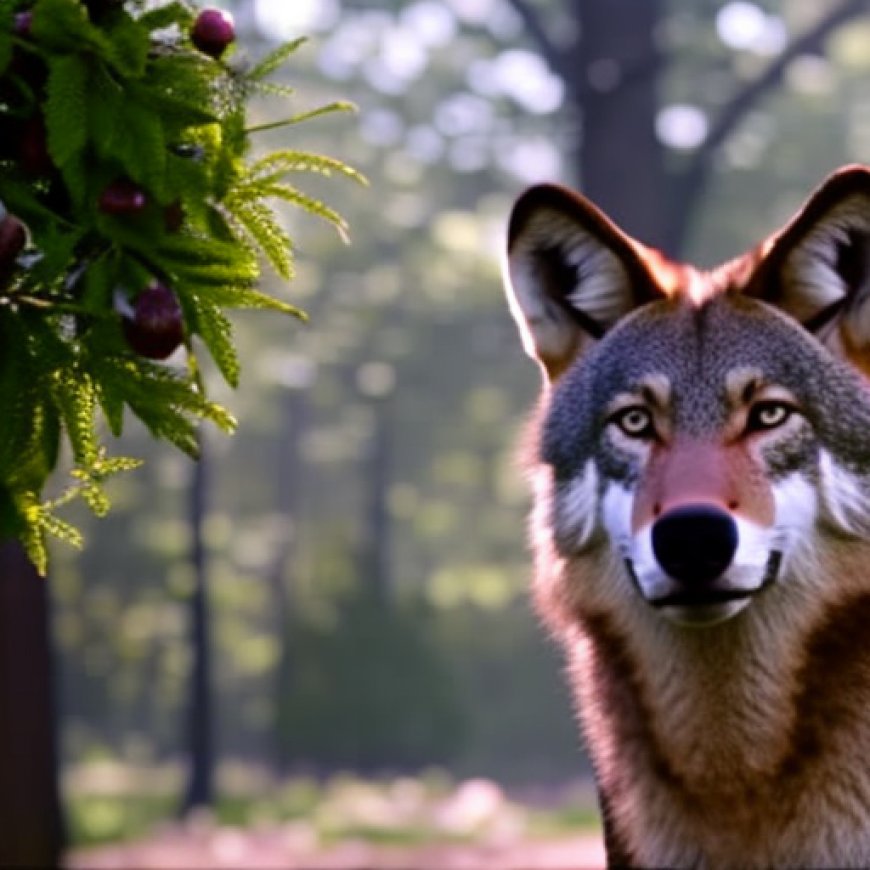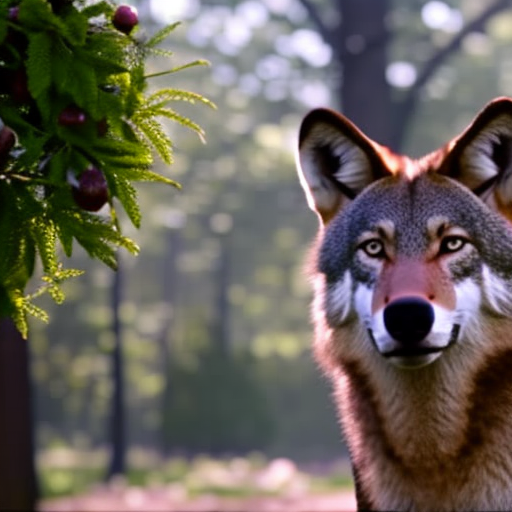New Red Wolf Recovery Plan Calls for More Reintroductions, Fewer Killings
New Red Wolf Recovery Plan Calls for More Reintroductions, Fewer ... Center for Biological Diversity



Raleigh, N.C. – U.S. Fish and Wildlife Service Issues New Recovery Plan for Endangered Red Wolves
In response to a legal victory by the Center for Biological Diversity, the U.S. Fish and Wildlife Service today issued a new recovery plan for the red wolf, the world’s most endangered canid.
Measures to Promote Red Wolf Conservation
Today’s final plan calls for several measures to promote red wolf conservation, including the establishment of new wolf populations and a reduction in human-caused wolf deaths.
- Establishment of new wolf populations
- Reduction in human-caused wolf deaths
Will Harlan, Southeast director at the Center for Biological Diversity, expressed hope for the critically endangered red wolves and emphasized the need for the Fish and Wildlife Service to quickly identify several sites for new red wolf populations.
Recovery Vision
The plan’s recovery vision is to have three “wild and free” populations of red wolves coexisting with people across portions of the species’ historic range in the Southeastern United States. However, the plan does not name any specific sites for reintroduction, despite the identification of more than 20,000 square miles of suitable habitat that could support nearly 500 breeding pairs of red wolves.
Addressing Human-Caused Wolf Deaths
The plan identifies several important measures to address human-caused wolf deaths, such as public outreach to promote coexistence and enforcement of laws protecting red wolves from poachers. Reflective orange collars worn by wolves and increased signage along roads aim to reduce vehicle collisions.
Successful Red Wolf Adoption
In the spring, the Milltail red wolf family, which lives in the Alligator River National Wildlife Refuge, gave birth for the second year in a row. The Service placed a foster pup from a captive litter with the five puppies born in the wild den. In June, scientists confirmed that the red wolf mother adopted the foster pup, resulting in a family with six pups.
Continued Efforts for Red Wolf Conservation
Will Harlan commended the agency for proactively working to return red wolves to their rightful place on the landscape and emphasized the importance of implementing the plan’s life-saving conservation measures to save the red wolf.
Current Red Wolf Population
Once abundant across the Southeast, red wolves now live in just five counties in eastern North Carolina near the Alligator River National Wildlife Refuge. According to the Service’s most recent estimate, just 13 confirmed red wolves remain in the wild.
Legal Action and Recovery Plan Agreement
In 2019, the Center for Biological Diversity sued the Fish and Wildlife Service for failing to update the red wolves’ decades-old recovery plan by the end of 2018. As part of a 2020 agreement, the Service was required to complete a final recovery plan this year.
SDGs, Targets, and Indicators
| SDGs | Targets | Indicators |
|---|---|---|
| SDG 15: Life on Land | Target 15.5: Take urgent and significant action to reduce the degradation of natural habitats, halt the loss of biodiversity, and protect and prevent the extinction of threatened species. | Indicator 15.5.1: Red List Index |
| SDG 15: Life on Land | Target 15.9: By 2020, integrate ecosystem and biodiversity values into national and local planning, development processes, poverty reduction strategies, and accounts. | Indicator 15.9.1: Progress towards national targets established in accordance with Aichi Biodiversity Target 2 of the Strategic Plan for Biodiversity 2011-2020 |
| SDG 15: Life on Land | Target 15.c: Enhance global support for efforts to combat poaching and trafficking of protected species, including by increasing the capacity of local communities to pursue sustainable livelihood opportunities. | Indicator 15.c.1: Proportion of traded wildlife that was poached or illicitly trafficked |
1. Which SDGs are addressed or connected to the issues highlighted in the article?
- SDG 15: Life on Land
The article discusses the new recovery plan for the red wolf, an endangered species, and the measures being taken to promote red wolf conservation. This aligns with SDG 15, which aims to protect and restore terrestrial ecosystems and halt biodiversity loss.
2. What specific targets under those SDGs can be identified based on the article’s content?
- Target 15.5: Take urgent and significant action to reduce the degradation of natural habitats, halt the loss of biodiversity, and protect and prevent the extinction of threatened species.
- Target 15.9: By 2020, integrate ecosystem and biodiversity values into national and local planning, development processes, poverty reduction strategies, and accounts.
- Target 15.c: Enhance global support for efforts to combat poaching and trafficking of protected species, including by increasing the capacity of local communities to pursue sustainable livelihood opportunities.
The article highlights the need for measures to reduce human-caused wolf deaths, establish new wolf populations, and enforce laws protecting red wolves from poachers. These actions directly contribute to Target 15.5 by preventing the extinction of threatened species and reducing habitat degradation. Additionally, the article mentions the importance of integrating ecosystem and biodiversity values into planning processes, which aligns with Target 15.9. The mention of poachers and the need to combat wildlife trafficking relates to Target 15.c.
3. Are there any indicators mentioned or implied in the article that can be used to measure progress towards the identified targets?
- Indicator 15.5.1: Red List Index
- Indicator 15.9.1: Progress towards national targets established in accordance with Aichi Biodiversity Target 2 of the Strategic Plan for Biodiversity 2011-2020
- Indicator 15.c.1: Proportion of traded wildlife that was poached or illicitly trafficked
The article does not explicitly mention these indicators, but they can be used to measure progress towards the identified targets. The Red List Index (Indicator 15.5.1) measures the overall extinction risk of species and can be used to assess the effectiveness of conservation efforts for threatened species like the red wolf. Indicator 15.9.1 tracks progress towards national targets for integrating ecosystem and biodiversity values into planning processes. Indicator 15.c.1 measures the proportion of traded wildlife that is poached or illicitly trafficked, providing insight into efforts to combat wildlife trafficking and protect endangered species.
4. Table: SDGs, Targets, and Indicators
| SDGs | Targets | Indicators |
|---|---|---|
| SDG 15: Life on Land | Target 15.5: Take urgent and significant action to reduce the degradation of natural habitats, halt the loss of biodiversity, and protect and prevent the extinction of threatened species. | Indicator 15.5.1: Red List Index |
| SDG 15: Life on Land | Target 15.9: By 2020, integrate ecosystem and biodiversity values into national and local planning, development processes, poverty reduction strategies, and accounts. | Indicator 15.9.1: Progress towards national targets established in accordance with Aichi Biodiversity Target 2 of the Strategic Plan for Biodiversity 2011-2020 |
| SDG 15: Life on Land | Target 15.c: Enhance global support for efforts to combat poaching and trafficking of protected species, including by increasing the capacity of local communities to pursue sustainable livelihood opportunities. | Indicator 15.c.1: Proportion of traded wildlife that was poached or illicitly trafficked |
Behold! This splendid article springs forth from the wellspring of knowledge, shaped by a wondrous proprietary AI technology that delved into a vast ocean of data, illuminating the path towards the Sustainable Development Goals. Remember that all rights are reserved by SDG Investors LLC, empowering us to champion progress together.
Source: biologicaldiversity.org

Join us, as fellow seekers of change, on a transformative journey at https://sdgtalks.ai/welcome, where you can become a member and actively contribute to shaping a brighter future.







